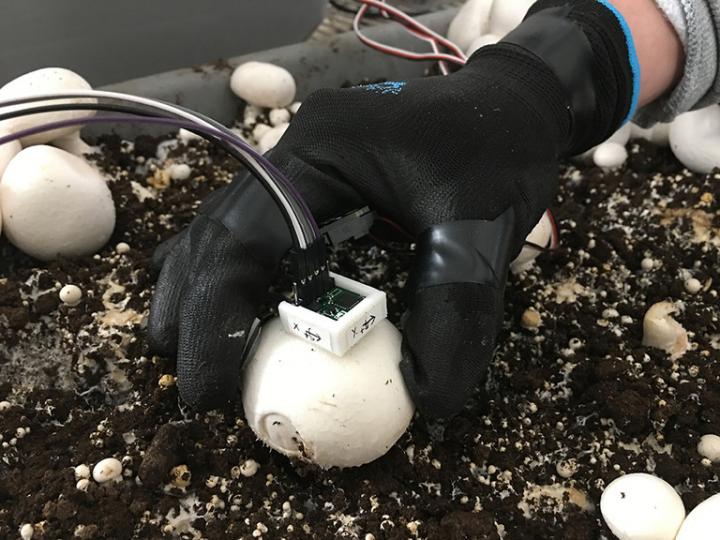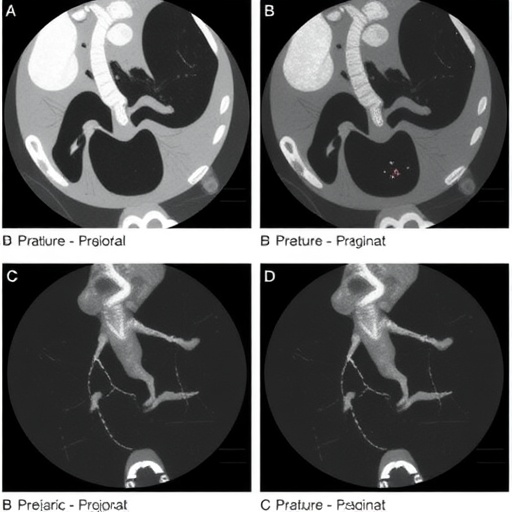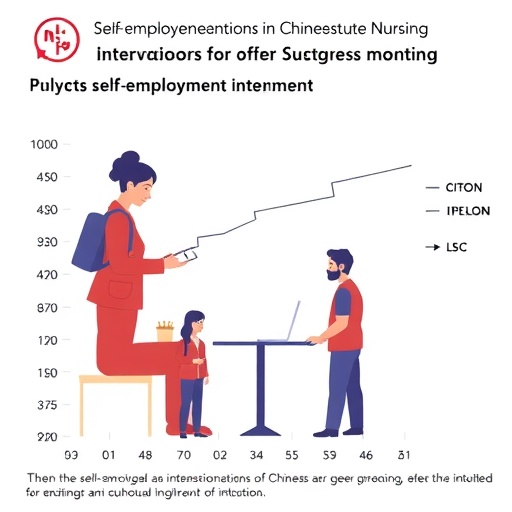Researchers in Penn State’s College of Agricultural Sciences have developed a robotic mechanism for mushroom picking and trimming and demonstrated its effectiveness for the automated harvesting of button mushrooms.
In a new study, the prototype, which is designed to be integrated with a machine vision system, showed that it is capable of both picking and trimming mushrooms growing in a shelf system.
“The mushroom industry in Pennsylvania is producing about two-thirds of the mushrooms grown nationwide, and the growers here are having a difficult time finding laborers to handle the harvesting, which is a very labor intensive and difficult job,” said He. “The industry is facing some challenges, so an automated system for harvesting like the one we are working on would be a big help.”
The button mushroom — Agaricus bisporus — is an important agricultural commodity. A total of 891 million pounds of button mushrooms valued at $1.13 billion were consumed in the U.S. from 2017 to 2018. Of this production, 91% were for the fresh market, according to the U.S. Department of Agriculture, and were picked by hand, one by one, to ensure product quality, shelf life and appearance. Labor costs for mushroom harvesting account for 15% to 30% of the production value, He pointed out.
Developing a device to effectively harvest mushrooms was a complex endeavor, explained He. In hand-picking, a picker first locates a mature mushroom and detaches it with one hand, typically using three fingers. A knife, in the picker’s other hand, is then used to remove the stipe end. Sometimes the picker waits until there are two or three mushrooms in hand and cuts them one by one. Finally, the mushroom is placed in a collection box. A robotic mechanism had to achieve an equivalent picking process.
The researchers designed a robotic mushroom-picking mechanism that included a picking “end-effector” based on a bending motion, a “4-degree-of-freedom positioning” end-effector for moving the picking end-effector, a mushroom stipe-trimming end-effector, and an electro-pneumatic control system. They fabricated a laboratory-scale prototype to validate the performance of the mechanism.
The research team used a suction cup mechanism to latch onto mushrooms and conducted bruise tests on the mushroom caps to analyze the influence of air pressure and acting time of the suction cup.
The test results, recently published in Transactions of the American Society of Agricultural and Biological Engineers, showed that the picking end-effector was successfully positioned to the target locations and its success rate was 90% at first pick, increasing to 94.2% after second pick.
Button mushrooms for the study were grown in tubs at Penn State’s Mushroom Research Center on the University Park campus. Fabrication and experiments were conducted at the Fruit Research and Extension Center in Biglerville. A total of 70 picking tests were conducted to evaluate the robotic picking mechanism. The working pressures of the pneumatic system and the suction cup were set at 80 and 25 pounds per square inch, respectively.
###
Other Penn State researchers involved in the study were Daeun Choi, assistant professor of agricultural and biological engineering, and John Pecchia, associate research professor, Department of Plant Pathology and Environmental Microbiology. Research team members also included doctoral students Mingsen Huang, from Jiangsu University, Zhenjiang, China; and Xiaohu Jiang, from Jilin University, Changchun, China, both visiting Penn State’s Department of Agricultural and Biological Engineering.
The Penn State Mushroom Research Competitive Grants Program supported this research.
Media Contact
A’ndrea Elyse Messer
[email protected]
Related Journal Article
http://dx.





